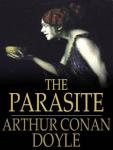
The Parasite
by Arthur Conan Doyle
The Parasite is a 1894 novelette by Sir Arthur Conan Doyle.
The main character is a young man known as Austin Gilroy. He studies physiology and knows a professor who is studying the occult. The young man is introduced to a middle-aged woman known as Miss Penclosa, who has a crippled leg and psychic powers. She is a friend of the Professor's wife. The skeptical Gilroy's fiancée, Agatha, is put into a trance to prove Miss Penclosa's powers. This succeeds and Gilroy begins to go to the Professor's house where Miss Penclosa practices her powers on him (one of the many things she tells him is that her powers vary with her strength). This is so Gilroy can look at the physical part of the powers.
Miss Penclosa (who has done this before) 'falls in love' with the unfortunate Gilroy. She starts to use her powers on him to make him caress and utter sweet nothings to her. He loses his temper, rejects her love, and she begins to play tricks on him with her powers. The series of cruel tricks ends with him in his Agatha's room carrying a small bottle of sulphuric acid. He notices that it is half-past three. He rushes to Miss Penclosa's home and demands for her presence at the door. The nurse there answers in a frightened tone that she died at half-past three.
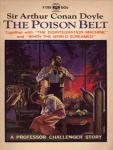
The Poison Belt
by Arthur Conan Doyle
The Poison Belt was the second story, a novella, that Sir Arthur Conan Doyle wrote about Professor Challenger. Written in 1913, roughly a year before the outbreak of World War I, much of it takes place—rather oddly, given that it follows The Lost World, a story set in the jungle—in a room in Challenger's house. This would be the last story written about Challenger until the 1920s, by which time Doyle's spiritualist beliefs had begun to influence his writing.
Challenger sends telegrams asking his three companions from The Lost World - Edward Malone, Lord John Roxton, and Professor Summerlee - to join him at his home outside of London. The cryptic telegrams also instruct each of them to bring a tank of oxygen. When they arrive they are ushered into a sealed room, along with Challenger and his wife. In the course of his research, Challenger has predicted that the Earth is about to come into contact with a belt of poisonous ether, which will, based on its effect on the people of Sumatra earlier in the day, cause the end of humanity. Challenger seals them in the room with the cylinders of oxygen, which he (correctly) believes will counter the effect of the ether. The sealing is not to keep the ether out - it permeates everything - but "to keep the oxygen in".
The five of them wait out the Earth's passage through the band as they watch the world outside die, and machines run amok. (In an interesting display of Victorian values - or, at least, Doyle's take on them - Challenger does not even consider including his servants; they are left outside the room to die, and continue to perform their duties until the ether overtakes them.) Finally, the last of their oxygen cylinders runs dry, and they open a window, ready to face death. To their surprise, they do not die, and they wander through the dead countryside in Challenger's car, eventually making it to London. They encounter only one survivor, who is an elderly, bed-ridden woman prescribed oxygen for her health.
After going to London and back, they make plans for the fate of the world at their hands—when suddenly, people start to wake up again. The effect of the ether turns out to be temporary, and the world wakes up again after a little over a day in a coma, with no knowledge that they have lost any time at all. Eventually Challenger and his companions manage to convince the world what happened - a task made easier by the tremendous amount of death and destruction caused by runaway machines and fires that took place while the world was asleep - and humanity is shocked into placing a higher value on life, and how well we spend what little time we are given.
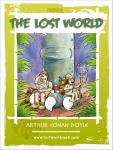
The Lost World
by Arthur Conan Doyle
This book is a novel released in 1912 by Sir Arthur Conan Doyle concerning an expedition to a plateau in the Amazon basin of South America where prehistoric animals (dinosaurs and other extinct creatures) still survive.
Edward Malone, a reporter for the Daily Gazette, goes to his news editor, McArdle, to procure a dangerous and adventurous mission in order to impress the woman he loves, Gladys Hungerton. He is sent to interview Professor George Edward Challenger, who has assaulted four or five other journalists, to determine if his claims about his trip to South America are true. After assaulting Malone, Challenger reveals his discovery of dinosaurs in South America. Having been ridiculed for years, he invites Malone on a trip to prove his story, along with Professor Summerlee, another scientist qualified to examine any evidence, and Lord John Roxton, an adventurer who knows the Amazon and several years prior to the events of the book helped end slavery by robber barons in South America. They reach the plateau with the aid of Indian guides, who are superstitiously scared of the area. One of these Indians, Gomez, is the brother of a man that Roxton killed the last time he was in South America. When the expedition manages to get onto the plateau, Gomez destroys their bridge, trapping them. Their "devoted negro" Zambo remains at the base, but is unable to prevent the rest of the Indians from leaving.
Deciding to investigate the lost world, they are attacked by pterodactyls in a swamp, and Roxton finds some blue clay in which he takes a great interest. After exploring the plateau and having some adventures in which the expedition narrowly escapes being killed by dinosaurs, Challenger, Summerlee, and Roxton are captured by a race of ape-men. While in the ape-men's village, they find out that there is also a tribe of humans (calling themselves Accala) inhabiting the other side of the plateau, with whom the ape-men (called Doda by the Accala) are at war. Roxton manages to escape and team up with Malone to mount a rescue. They arrive just in time to prevent the execution of one of the professors and several other humans, who take them to the human tribe. With their help, they defeat the ape-men, taking control of the whole plateau.
After witnessing the power of their guns, the human tribe does not want the expedition to leave, and tries to keep them on the plateau. However the team finally discovers a tunnel that leads to the outside, where they meet up with Zambo and a large rescue party. Upon returning to England, they present their report which include pictures and a newspaper report by Edward, which many dismiss as they had Challenger's original story. Having planned ahead, Challenger shows them a live pterodactyl as proof, which then escapes and flies out into the Atlantic ocean. When the four of them have dinner, Roxton shows them why he was so interested in the blue clay. It contains diamonds, about £200,000 worth, to be split between them. Challenger plans to open a private museum, Summerlee plans to retire and categorize fossils, and Roxton plans to go back to the lost world. Malone returns to his love, Gladys, only to find that she had married a clerk while he was away. With nothing keeping him in London, he volunteers to be part of Roxton's second trip.
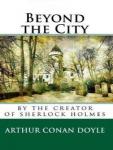
Beyond The City
by Arthur Conan Doyle
"How deeply are our destinies influenced by the most trifling causes Had the unknown builder who erected and owned these new villas contented himself by simply building each within its own grounds, it is probable that these three small groups of people would have remained hardly conscious of each others existence. But there was a common link to bind them together. And especially to the Admiral and the Doctor were this closer intimacy and companionship of value. Each had a void in his life, as every man must have who with unexhausted strength steps out of the great race, but each by his society might help to fill up that of his neighbor." An altogether different sort of tale from the man who gave the world Sherlock Holmes.
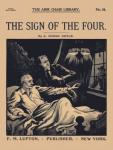
The Sign of Four
by Arthur Conan Doyle
The Sign of the Four (1890), also called The Sign of Four, is the second novel featuring Sherlock Holmes written by Sir Arthur Conan Doyle. Doyle wrote four novels and 56 stories starring the fictional detective.
The story is set in 1888. The Sign of the Four has a complex plot involving service in East India Company, India, the Indian Rebellion of 1857, a stolen treasure, and a secret pact among four convicts ("the Four" of the title) and two corrupt prison guards. It presents the detective's drug habit and humanizes him in a way that had not been done in A Study in Scarlet. It also introduces Doctor Watson's future wife, Mary Morstan.
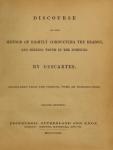
Discourse on the Method
by Rene Descartes
The Discourse on the Method is a philosophical and autobiographical treatise published by René Descartes in 1637. Its full name is Discourse on the Method of Rightly Conducting One's Reason and of Seeking Truth in the Sciences (French title: Discours de la méthode pour bien conduire sa raison, et chercher la vérité dans les sciences). The Discourse on Method is best known as the source of the famous quotation "Je pense, donc je suis" ("I think, therefore I am"), which occurs in Part IV of the work. (The similar statement in Latin, Cogito ergo sum, is found in §7 of Principles of Philosophy.)
Discourse on Method
The Discourse on the Method is one of the most influential works in the history of modern philosophy, and important to the evolution of natural sciences. In this work, Descartes tackles the problem of skepticism, which had previously been studied by Sextus Empiricus, Al-Ghazali and Michel de Montaigne. Descartes modified it to account for a truth he found to be incontrovertible. Descartes started his line of reasoning by doubting everything, so as to assess the world from a fresh perspective, clear of any preconceived notions.
The book was originally published in Leiden, Netherlands. Later, it was translated into Latin and published in 1656 in Amsterdam. The book was intended as an introduction to three works Dioptrique, Météores and Géométrie. La Géométrie contains Descartes' first introduction of the Cartesian coordinate system.
Together with Meditations on First Philosophy (Meditationes de Prima Philosophia), Principles of Philosophy (Principia philosophiae) and Rules for the Direction of the Mind (Regulae ad directionem ingenii), it forms the base of the Epistemology known as Cartesianism.
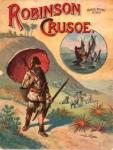
Robinson Crusoe
by Daniel Defoe
This book is a novel by Daniel Defoe, first published on 25 April 1719.
Crusoe (the family name corrupted from the German name "Kreutznaer") sets sail from the Queen's Dock in Hull on a sea voyage in August 1651, against his parents' wishes, who want him to pursue a career, possibly in law. After a tumultuous journey where his ship is wrecked in a storm, his lust for the sea remains so strong that he sets out to sea again. This journey, too, ends in disaster as the ship is taken over by Salé pirates (the Salé Rovers) and Crusoe is enslaved by a Moor. Two years later, he escapes in a boat with a boy named Xury; a Captain of a Portuguese ship off the west coast of Africa rescues him. The ship is en route to Brazil. With the captain's help, Crusoe procures a plantation.
Years later, Crusoe joins an expedition to bring slaves from Africa but he is shipwrecked in a storm about forty miles out to sea on an island (which he calls the Island of Despair) near the mouth of the Orinoco river on September 30, 1659. The details of Crusoe's island were probably based on the Caribbean island of Tobago, since that island lies a short distance north of the Venezuelan coast near the mouth of the Orinoco river, in sight of Trinidad.[7] Only he and three animals, the captain's dog and two cats, survive the shipwreck. Overcoming his despair, he fetches arms, tools, and other supplies from the ship before it breaks apart and sinks. He builds a fenced-in habitat near a cave which he excavates. By making marks in a wooden cross, he creates a calendar. By using tools salvaged from the ship, and ones he makes himself, he hunts, grows barley and rice, dries grapes to make raisins, learns to make pottery, and raises goats. He also adopts a small parrot. He reads the Bible and becomes religious, thanking God for his fate in which nothing is missing but human society.
More years pass and Crusoe discovers native cannibals, who occasionally visit the island to kill and eat prisoners. At first he plans to kill them for committing an abomination but later realizes he has no right to do so, as the cannibals do not knowingly commit a crime. He dreams of obtaining one or two servants by freeing some prisoners; when a prisoner escapes, Crusoe helps him, naming his new companion "Friday" after the day of the week he appeared. Crusoe then teaches him English and converts him to Christianity.
After more natives arrive to partake in a cannibal feast, Crusoe and Friday kill most of the natives and save two prisoners. One is Friday's father and the other is a Spaniard, who informs Crusoe about other Spaniards shipwrecked on the mainland. A plan is devised wherein the Spaniard would return to the mainland with Friday's father and bring back the others, build a ship, and sail to a Spanish port.
Before the Spaniards return, an English ship appears; mutineers have commandeered the vessel and intend to maroon their captain on the island. Crusoe and the ship's captain strike a deal in which Crusoe helps the captain and the loyal sailors retake the ship and leave the worst mutineers on the island. Before embarking for England, Crusoe shows the mutineers how he survived on the island and states that there will be more men coming. Crusoe leaves the island 19 December 1686 and arrives in England on 11 June 1687. He learns that his family believed him dead; as a result, he was left nothing in his father's will. Crusoe departs for Lisbon to reclaim the profits of his estate in Brazil, which has granted him much wealth. In conclusion, he transports his wealth overland to England to avoid travelling by sea. Friday accompanies him and, en route, they endure one last adventure together as they fight off famished wolves while crossing the Pyrenees.

Bureaucracy
by Honore de Balzac
In Paris, where men of thought and study bear a certain likeness to one another, living as they do in a common centre, you must have met with several resembling Monsieur Rabourdin, whose acquaintance we are about to make at a moment when he is head of a bureau in one of our most important ministries. At this period he was forty years old, with gray hair of so pleasing a shade that women might at a pinch fall in love with it for it softened a somewhat melancholy countenance, blue eyes full of fire, a skin that was still fair, though rather ruddy and touched here and there with strong red marks; a forehead and nose a la Louis XV., a serious mouth, a tall figure, thin, or perhaps wasted, like that of a man just recovering from illness, and finally, a bearing that was midway between the indolence of a mere idler and the thoughtfulness of a busy man. If this portrait serves to depict his character, a sketch of this man's dress will bring it still further into relief. Rabourdin wore habitually a blue surcoat, a white cravat, a waistcoat crossed a la Robespierre, black trousers without straps, gray silk stockings and low shoes. Well-shaved, and with his stomach warmed by a cup of coffee, he left home at eight in the morning with the regularity of clock-work, always passing along the same streets on his way to the ministry: so neat was he, so formal, so starched that he might have been taken for an Englishman on the road to his embassy.

The Country Doctor
by Honore de Balzac
The country doctor, Monsieur Benassis, practices in a village called Voreppe at the base of the Grande Chartreuse Mountains. He is a seedy and unkempt, but very kind-hearted, bachelor of 50 who lives with his authoritarian housekeeper. Benassis was brought up in the country, but had lived for many years in Paris where he enjoyed a dissipated life and loved two women. He left the first, only to learn later that she bore him a son and died of heart disease. Later his illegitimate son died.
His second love, Evelina, broke off their engagement when her parents objected to the suitor’s sordid past. Benassis became very depressed and considered suicide. After visiting a monastery in the Grand Chartreuse region, he decided to move to Voreppe and devote his life to serving the poor rural people. He not only practices medicine, but over the years has also initiated a number of economic and community development projects in the area.
Above the village is a hamlet that contains a dozen cretins among the thirty families who live there. Cretinism is common in the region. Dr. Benassis decides that it would be good for the public health to have all the cretins sent to an asylum in Aiguebelle, some distance away. When Benassis becomes mayor, he arranges to have the cretins transported to Aiguebelle, despite opposition from the local people. One cretin remains "to be fed and cared for as the adopted child of the commune."
Benassis later moves the other inhabitants of the hamlet to a new, more fertile, site in the valley and installs an irrigation system for them. At the end of the novel, Benassis has a stroke and dies. He is the first to be buried in the new cemetery.
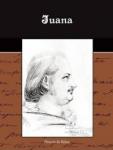
Juana
by Honore de Balzac
An awful destiny Juana, who felt neither esteem nor love for Diard, was bound to him forever, by a rash but necessary promise. The man was neither handsome nor well-made. His manners, devoid of all distinction, were a mixture of the worst army tone, the habits of his province, and his own insufficient education. How could she love Diard, she, a young girl all grace and elegance.
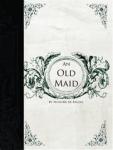
An Old Maid
by Honore de Balzac
The story follows the life of Tina, a young woman caught between the mother who adopted her - the beautiful, upstanding Delia - and her true mother, her plain, unmarried 'aunt' Charlotte, who gave Tina up to provide her with a socially acceptable life.
The three women live quietly together until Tina's wedding day, when Delia's and Charlotte's hidden jealousies rush to the surface. Originally serialized in The Red Book magazine in 1922, The Old Maid is an examination of class and society as only Edith Wharton could undertake.
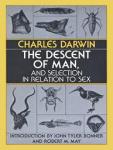
The Descent of Man
by Charles Darwin
This is a book on evolutionary theory by English naturalist Charles Darwin, first published in 1871. It was Darwin's second book on evolutionary theory, following his 1859 work, On the Origin of Species. In The Descent of Man, Darwin applies evolutionary theory to human evolution, and details his theory of sexual selection. The book discusses many related issues, including evolutionary psychology, evolutionary ethics, differences between human races, differences between sexes, the dominant role of women in choosing mating partners, and the relevance of the evolutionary theory to society.
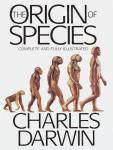
The Origin of Species - 6th Edition
by Charles Darwin
On the Origin of Species, published on 24 November 1859, is a work of scientific literature by Charles Darwin which is considered to be the foundation of evolutionary biology. Its full title was On the Origin of Species by Means of Natural Selection, or the Preservation of Favoured Races in the Struggle for Life. For the sixth edition of 1872, the short title was changed to The Origin of Species. Darwin's book introduced the scientific theory that populations evolve over the course of generations through a process of natural selection. It presented a body of evidence that the diversity of life arose by common descent through a branching pattern of evolution. Darwin included evidence that he had gathered on the Beagle expedition in the 1830s and his subsequent findings from research, correspondence, and experimentation.
Various evolutionary ideas had already been proposed to explain new findings in biology. There was growing support for such ideas among dissident anatomists and the general public, but during the first half of the 19th century the English scientific establishment was closely tied to the Church of England, while science was part of natural theology. Ideas about the transmutation of species were controversial as they conflicted with the beliefs that species were unchanging parts of a designed hierarchy and that humans were unique, unrelated to other animals. The political and theological implications were intensely debated, but transmutation was not accepted by the scientific mainstream.
The book was written for non-specialist readers and attracted widespread interest upon its publication. As Darwin was an eminent scientist, his findings were taken seriously and the evidence he presented generated scientific, philosophical, and religious discussion. The debate over the book contributed to the campaign by T.H. Huxley and his fellow members of the X Club to secularise science by promoting scientific naturalism. Within two decades there was widespread scientific agreement that evolution, with a branching pattern of common descent, had occurred, but scientists were slow to give natural selection the significance that Darwin thought appropriate. During the "eclipse of Darwinism" from the 1880s to the 1930s, various other mechanisms of evolution were given more credit. With the development of the modern evolutionary synthesis in the 1930s and 1940s, Darwin's concept of evolutionary adaptation through natural selection became central to modern evolutionary theory, now the unifying concept of the life sciences.
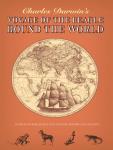
The Voyage of the Beagle
by Charles Darwin
This is a title commonly given to the book written by Charles Darwin and published in 1839 as his Journal and Remarks, bringing him considerable fame and respect. The title refers to the second survey expedition of the ship HMS Beagle, which set sail from Plymouth Sound on 27 December 1831 under the command of Captain Robert FitzRoy, R.N..
While the expedition was originally planned to last two years, it lasted almost five—the Beagle did not return until 2 October 1836. Darwin spent most of this time exploring on land (three years and three months on land; 18 months at sea).
The book, also known as Darwin's Journal of Researches, is a vivid and exciting travel memoir as well as a detailed scientific field journal covering biology, geology, and anthropology that demonstrates Darwin's keen powers of observation, written at a time when Western Europeans were exploring and charting the whole world. Although Darwin revisited some areas during the expedition, for clarity the chapters of the book are ordered by reference to places and locations rather than by date. Darwin's notes made during the voyage include comments illustrating his changing views at a time when he was developing his theory of evolution by natural selection and includes some suggestions of his ideas, particularly in the second edition of 1845.
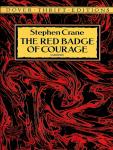
The Red Badge of Courage
by Stephen Crane
This book is a war novel by American author Stephen Crane (1871–1900). Taking place during the American Civil War, the story is about a young private of the Union Army, Henry Fleming, who flees from the field of battle. Overcome with shame, he longs for a wound—a "red badge of courage"—to counteract his cowardice. When his regiment once again faces the enemy, Henry acts as standard-bearer.
On a cold day the fictional 304th New York Regiment awaits battle beside a river. Eighteen-year-old Private Henry Fleming, remembering his romantic reasons for enlisting as well as his mother's resulting protests, wonders whether he will remain brave in the face of fear, or turn and run. He is comforted by one of his friends from home, Jim Conklin, who admits that he would run from battle if his fellow soldiers also fled. During the regiment's first battle, Confederate soldiers charge, but are repelled. The enemy quickly regroups and attacks again, this time forcing some of the unprepared Union soldiers to flee. Fearing the battle is a lost cause, Henry deserts his regiment. Only after he reaches the rear of the army does he overhear a general announcing the Union's victory.
Ashamed, Henry escapes into a nearby forest, where he discovers a decaying body in a peaceful clearing. In his distress, he hurriedly leaves the clearing and stumbles upon a group of injured men returning from battle. One member of the group, a "tattered soldier", asks Henry where he is wounded, but the youth dodges the question. Amongst the group is Jim Conklin, who has been shot in the side and is suffering delirium from blood-loss. Jim eventually dies of his injury, defiantly resisting aid from his friend, and an enraged and helpless Henry runs from the wounded soldiers. He next joins a retreating column that is in disarray. In the ensuing panic, a man hits Henry on the head with his rifle, wounding him. Exhausted, hungry, thirsty, and now wounded, Henry decides to return to his regiment regardless of his shame. When he arrives at camp, the other soldiers believe his injury resulted from a grazing bullet during battle. The other men care for the youth, dressing his wound.
The next morning Henry goes into battle for the third time. His regiment encounters a small group of Confederates, and in the ensuing fight Henry proves to be a capable soldier, comforted by the belief that his previous cowardice had not been noticed, as he "had performed his mistakes in the dark, so he was still a man".[19] Afterward, while looking for a stream from which to obtain water with a friend, he discovers from the commanding officer that his regiment has a lackluster reputation. The officer speaks casually about sacrificing the 304th because they are nothing more than "mule drivers" and "mud diggers". With no other regiments to spare, the general orders his men forward.
In the final battle, Henry acts as the flag-bearer after the color sergeant falls. A line of Confederates hidden behind a fence beyond a clearing shoot with impunity at Henry's regiment, which is ill-covered in the tree-line. Facing withering fire if they stay, and disgrace if they retreat, the officers order a charge. Unarmed, Henry leads the men while entirely escaping injury. Most of the Confederates run before the regiment arrives, and four of the remaining men are taken prisoner.